Most Cited

2024, 73 (4): 048901.
doi: 10.7498/aps.73.20231416
Abstract +
Identifying influential nodes in spreading process in the network is an important step to control the speed and range of spreading, which can be used to accelerate the spread of beneficial information such as healthy behaviors, innovations and suppress the spread of epidemics, rumors and fake news. Existing researches on identification of influential spreaders are mostly based on low-order complex networks with pairwise interactions. However, interactions between individuals occur not only between pairwise nodes but also in groups of three or more nodes, which introduces complex mechanism of reinforcement and indirect influence. The higher-order networks such as simplicial complexes and hypergraphs, can describe features of interactions that go beyond the limitation of pairwise interactions. Currently, there are relatively few researches of identifying influential spreaders in higher-order networks. Some centralities of nodes such as higher-order degree centrality and eigenvector centrality are proposed, but they mostly consider only the network structure. As for identification of influential spreaders, the spreading influence of a node is closely related to the spreading process. In this paper, we work on identification of influential spreaders on simplicial complexes by taking both network structure and dynamical process into consideration. Firstly, we quantitatively describe the dynamics of disease spreading on simplicial complexes by using the Susceptible-Infected-Recovered microscopic Markov equations. Next, we use the microscopic Markov equations to calculate the probability that a node is infected in the spreading process, which is defined as the spreading centrality (SC) of nodes. This spreading centrality involves both the structure of simplicial complex and the dynamical process on it, and is then used to rank the spreading influence of nodes. Simulation results on two types of synthetic simplicial complexes and four real simplicial complexes show that compared with the existing centralities on higher-order networks and the optimal centralities of collective influence and nonbacktracking centrality in complex networks, the proposed spreading centrality can more accurately identify the most influential spreaders in simplicial complexes. In addition, we find that the probability of nodes infected is highly positively correlated with its influence, which is because disease preferentially reaches nodes with many contacts, who can in turn infect their many neighbors and become influential spreaders.

2024, 73 (2): 025201.
doi: 10.7498/aps.73.20231056
Abstract +
Laser-sustained plasma (LSP), which can be utilized for a novel radiation light source, has advantages such as high irradiance, broad spectral range, and stable emission, demonstrating significant applications in wafer inspection in the field of the semiconductor industry. This paper revisits the historical development of LSP research and introduces fundamental physical processes in LSP. The mathematical description equations for LSP and methods of calculating plasma parameters are provided, thereby a time-dependent two-dimensional fluid model is established by taking into consideration a laser-thermal-hydrodynamic coupling effect. The propagation of the laser in plasma is investigated based on the established model, and the fundamental processes in LSP, including the initial evolution process, laser energy deposition, steady-state characteristics, and instability, are explored. The effectiveness of the simulation model is confirmed through comparing with the experimental results of high-pressure Xe LSP. The findings indicate that the mode, power, F-number of incident lasers, as well as parameters including components, pressure, and flow velocity of gas, can all affect the steady-state properties of LSPs. Under the identical power and F-number conditions, Gaussian mode laser and annular mode laser both produce LSPs with different shapes and positions. Notably, under the conditions of high-power annular laser incidence, large laser F-number, and high flow velocity, the simulation results reveal temporal and spatial instability in LSP. These simulation results contribute significantly to a more in-depth understanding of the underlying physical mechanisms of the LSP. Furthermore, they provide a theoretical basis for designing the light source system and optimizing the multiple parameters. The influence of laser parameters on LSP properties elucidated in this study not only advances the fundamental understanding of LSP but also offers crucial insights for designing and optimizing the light source systems in various applications, particularly in the field of optical detection for semiconductor wafer inspection.
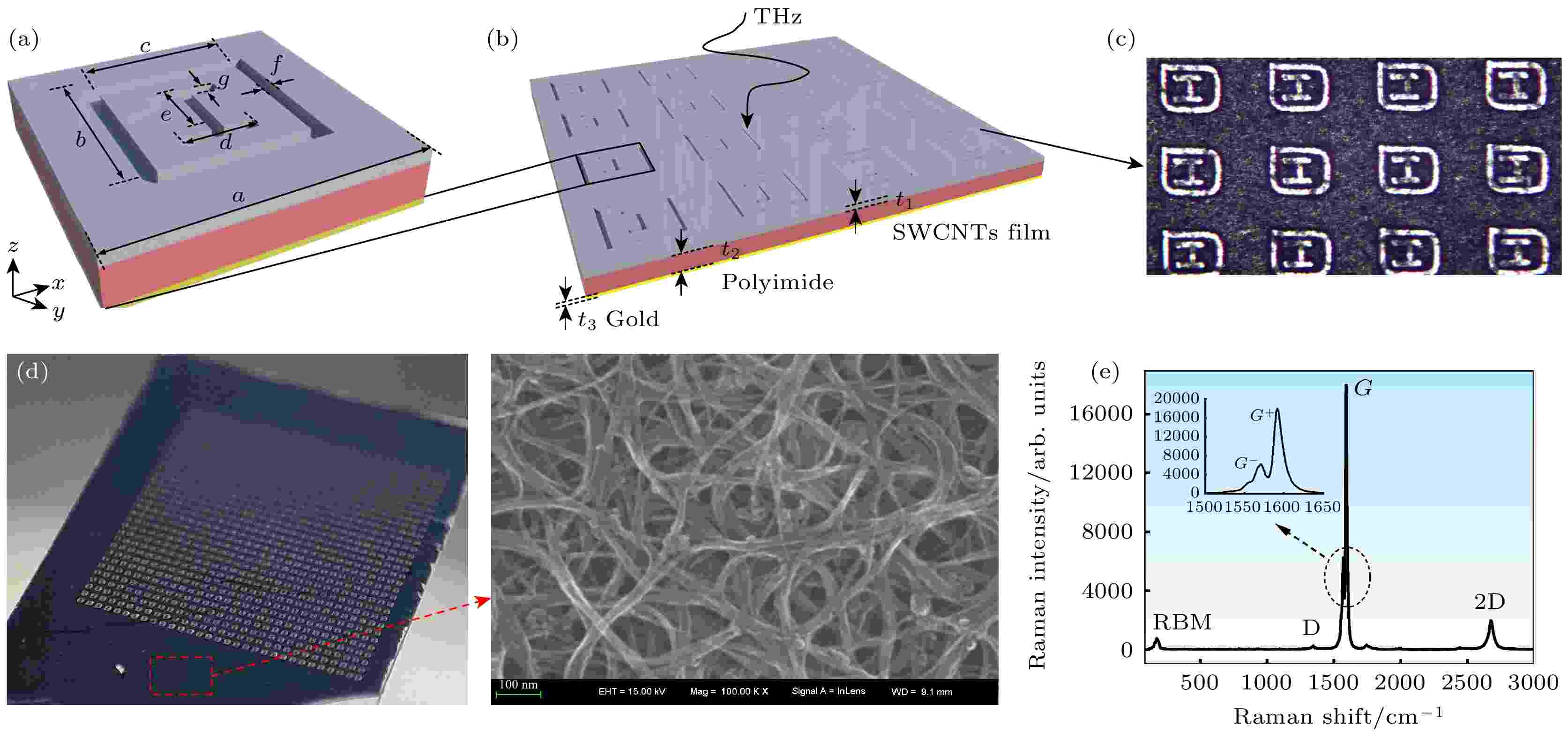
2024, 73 (2): 026102.
doi: 10.7498/aps.73.20231357
Abstract +
Due to their excellent electrical and optical properties, carbon nanotubes have broad application prospects in the field of optoelectronics. In this work the vacuum filtration method is used to obtain an isotropic single-walled carbon nanotube film by the dispersion of single-walled carbon nanotube powder through vacuum filtration; on the basis of extracting the dielectric parameters of the thin film in a range from 0.4 to 2.0 THz, a novel terahertz metasurface narrowband absorber based on single-walled carbon nanotube films is designed and prepared. This metasurface absorber is composed of square and I-shaped narrow slot resonators. The experimental and simulation results show that the proposed terahertz metasurface absorber exhibits four distinct resonance absorption peaks at 0.65, 0.85, 1.16, and 1.31 THz, respectively, achieving a perfect absorption of up to 90%. The absorption mechanism of this novel multi band terahertz metasurface is elucidated by using the theory of multiple reflection interference. By covering dielectric layers with different refractive indices on the surface of metasurface device, the sensing performance of metasurface acting as refractive index sensor is studied in depth. The research results indicate that this new type of metasurface absorber has high sensitivity for refractive index sensing, providing new ideas and solutions for further developing carbon-based new terahertz metasurface absorbers.
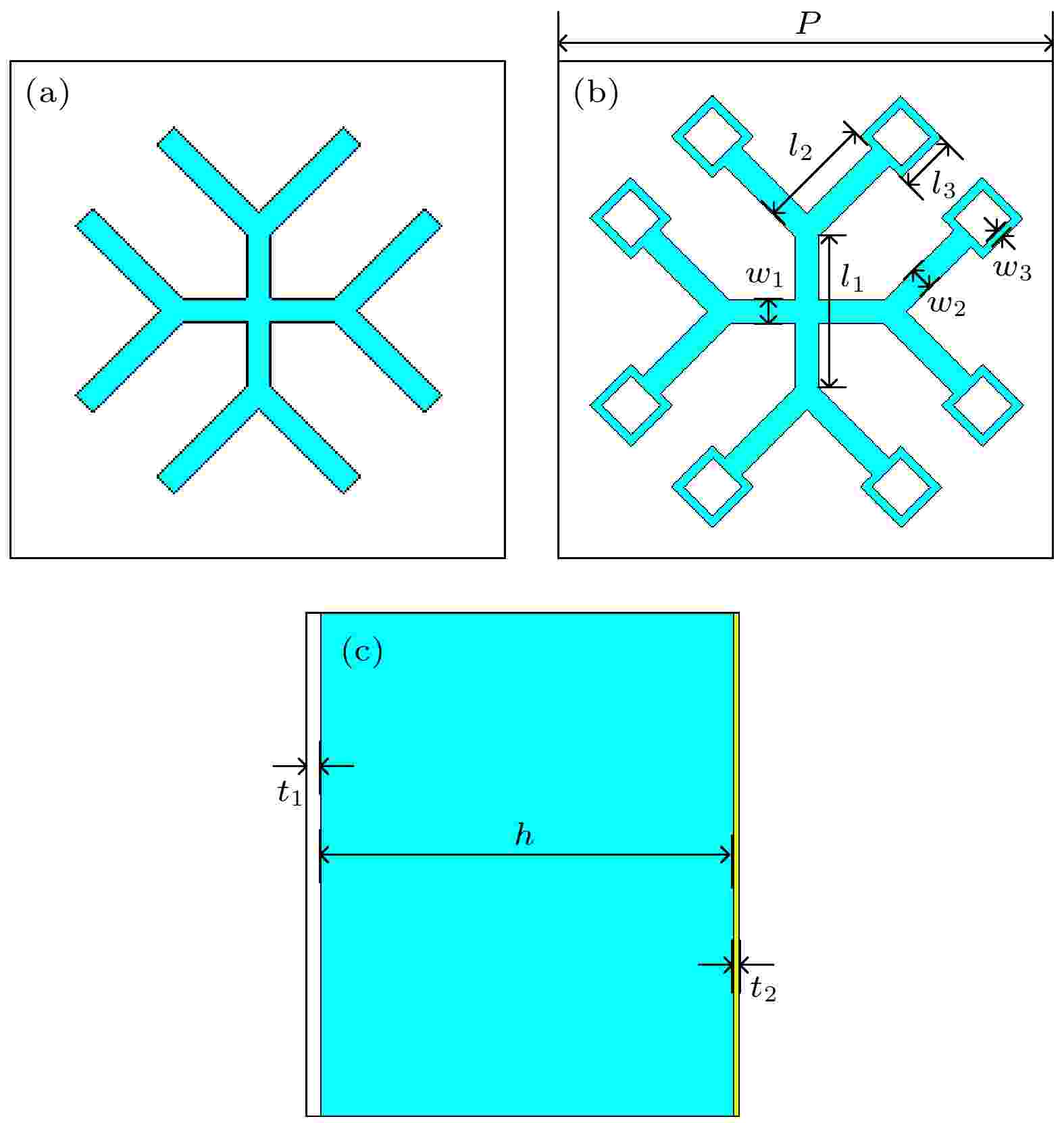
2024, 73 (2): 024201.
doi: 10.7498/aps.73.20231365
Abstract +
The design of thin frequency selective surface (FSS) absorber based on resistive film that meets the requirements of broadband, polarization independence, incident angle stability, and strong absorption is a challenging task. Fabrication tolerance of resistive film can result in fluctuations in sheet resistance, which negatively affects the absorber performance. To tackle these problems, this work firstly investigates how sheet resistance fluctuations affect the absorbing performance of resistive film FSS absorber. The analysis of simulated surface current density distribution and impedance reveals that the diversity of current paths provides an effective way to mitigate the influence of sheet resistance fluctuation. This is achieved by enabling flexible variation of surface current in response to sheet resistance fluctuations. Consequently, the variation of input impedance of the FSS absorber due to the fluctuation of sheet resistance is suppressed within a small range. Then, a method of extending bandwidth is proposed by employing the complementary variation of FSS impedance with frequency at different layers. By combining this approach with a miniaturization design, a thin and light FSS absorber is developed that exhibits ultra-wide bandwidth, polarization independence and angle stability while mitigating the effects of sheet resistance perturbation. The proposed FSS absorber achieves a 90% absorption bandwidth from 1.50 GHz to 20.50 GHz, covering Ku, X, C, S bands and part of the L and K bands, with a relative bandwidth reaching 173%. The absorber has a thickness of 0.093λL for both transverse electric (TE) polarization and transverse magnetic (TM) polarization, yielding a figure of merit (FoM, the ratio of the theoretical minimum thickness to the actual thickness) of 0.95, indicating that the thickness is close to the theoretical limit. The absorber maintains over 90% absorption rate for TM polarization at an incidence angle of up to 70°, and 80% absorption for TE polarization at 45°. Furthermore, the 90% absorbance bandwidth of the absorber remains at 167.0% when the sheet resistance of any FSS layer fluctuates within a range from 12 to 30 Ω/sq. A prototype of the proposed FSS absorber is fabricated and measured, and the experimental results are in good agreement with the simulation results, thus validating the effectiveness of the proposed method.

2024, 73 (4): 044205.
doi: 10.7498/aps.73.20231616
Abstract +
The 2.94 μm nanosecond erbium laser is an important solid-state laser source in the wide-tuning mid-infrared laser and clinical medical research. In this work, a novel LiNbO3 acousto-optically Q-switched Er:YAG laser is developed, and the effects of different Q-switched delay times and output coupler’s reflectivities on the laser output pulse characteristics are investigated at a repetition frequency of 20 Hz. A concave-convex resonant cavity is designed to compensate for the thermal lens effect, and a single Q-switched pulse is obtained. The maximum pulse energy and minimum pulse duration are 34.68 mJ and 119.9 ns respectively, with corresponding peak power of 289.24 kW. Compared with the plane-plane cavity, the cavity proposed herein increases the output energy by 2.09 times. To our knowledge, this is the highest energy ever obtained in the acousto-optically Q-switched Er:YAG laser. This work provides a new means for further studying wide-tuning mid-infrared laser technology.

2024, 73 (2): 027703.
doi: 10.7498/aps.73.20230708
Abstract +
Adding nanofillers into epoxy resin matrices is a common method to achieve their multi-function. Boron nitride nanotubes (BNNTs) with one-dimensional nanostructures have attracted much attention because of their ultra-high thermal conductivity, wide energy level band gap, high aspect ratio and mechanical strength. Yet, the strong π-π non-covalent bonding and lip-lip interactions make BNNTs prone to agglomeration in the epoxy resin matrix. Moreover, the different physicochemical properties of BNNTs and epoxy resins as well as the chemical inertness of BNNTs surface lead to the lack of effective interfacial interaction between BNNTs and epoxy resin matrix. Therefore, the performance of the epoxy composite dielectric is not enhanced by simple blending solely, but will even have the opposite effect. To address the problems of BNNTs, in this study, the surface structure of BNNTs is constructed from the perspective of interface modulation by using sol-gel method to coat mesoporous silica (mSiO2) on BNNTs’ surface and further introducing silane coupling agent (KH560). The results indicate that the surface structure of BNNTs can optimize the level of interfacial interaction between BNNTs and epoxy resin matrix, which leads to stronger interfacial connection and elimination of internal pore phenomenon. The dielectric constant and loss of the composite dielectric prepared in this way are further reduced, reaching 4.1 and 0.005 respectively at power frequency, which is significantly lower than that of pure epoxy resin. At the same time, the mechanical toughness (3.01 MJ/m3) and thermal conductivity (0.34 W/(m⋅K)) are greatly improved compared with the counterparts of pure epoxy resin. In addition, the unique nano-mesoporous structure of mSiO2 endows the composite dielectric with a large number of deep traps, which effectively hinders the migration of electrons, thereby improving the electrical strength of the composite dielectric, and the breakdown field strength reaches 95.42 kV/mm. Furthermore, the interfacial mechanism of BNNTs’ surface structure on dielectric relaxation and trap distribution of composite dielectrics is systematically studied by Tanaka multinuclear model. The above results indicate that the good interfacial interaction between BNNTs and epoxy resin matrix is crucial in establishing the micro-interface structure and improving the macroscopic properties of composite dielectrics. This study presents a novel idea for the multifunctionalities of epoxy resin, and also provides some experimental data support for revealing the correlation among surface properties of nano-fillers, microstructure and macroscopic properties of composite dielectric.

2024, 73 (1): 017501.
doi: 10.7498/aps.73.20231589
Abstract +
Hall effect is an ancient but highly potential subfield in condensed matter physics, and its origin can be traced back hundreds of years. In 1879, Hall made a momentous discovery that when a current-carrying conductor is placed in a magnetic field, the Lorentz force pushes its electrons to one side of the conductor. This intriguing phenomenon was dubbed Hall effect. Since then, a series of novel Hall effects have been discovered, including anomalous Hall effect, quantum Hall effect, spin Hall effect, topological Hall effect, and planar Hall effec. Notably, Hall effects play an important role in realizing the information transport, since it can realize the mutual conversion of current in different directions. In bosonic systems such as magnons, a series of magnon Hall effects have been found, jointly driving the development of the magnon-based spintronics. In this perspective, we review the researches of the Hall effect in magnonic system in recent years, and briefly introduce its modern semi-classical theories, including virtual electromagnetic field theory and scattering theory. Furthermore, we introduce the different magnon Hall effects and clarify the physics behind them. Finally, the prospect of magnon Hall effect is discussed.

2024, 73 (2): 020702.
doi: 10.7498/aps.73.20231224
Abstract +
CO2 is one of the main greenhouse gases. Its emission and accumulation lead to the strengthening of the greenhouse effect, which in turn causes global climate change. Therefore, it is of great significance to obtain the change of CO2 concentration in the atmospheric environment for the study of climate change. In order to meet the requirements of low cost, fast, on-line and accurate measurement of CO2 in atmospheric environment, a CO2 gas concentration measurement system based on Fabry-Perot interferometer is built in this work. The thermal radiation source based on micro-electro-mechanical system (MEMS) technology is used as a light source of the Fabry-Perot interferometer system, and the transmission optical path is designed to replace the common refractive optical path. By electrostatically controlling the distance between the two lenses and changing the interference spectrum, the interference peak adjustment of the center wavelength of the 10 nm step is realized, and the absorption spectrum is obtained by scanning. Based on the principle of differential optical absorption spectroscopy, the concentration of CO2 gas is obtained, and the real-time on-line monitoring of CO2 concentration is realized. Using the sample gas calibration system and the commercial photoacoustic spectroscopy multi-gas analyzer to verify the system, the results show that the detection limit of the system is 1.09×10–6, the detection accuracy is ±1.13×10–6, and the measurement error is less than 1%. Real-time online monitoring of atmospheric CO2 has been conducted in Huaibei, a coal city. A comparative observational experiment is performed between this system and a commercial photoacoustic spectroscopy multi-gas analyzer. The two systems show consistent trends in measuring CO2 variations, with a correlation coefficient of R=0.92. It shows that the Fabry-Perot interferometer system can meet the requirement of rapid, convenient and high precision measurement of CO2 concentration in the environment.
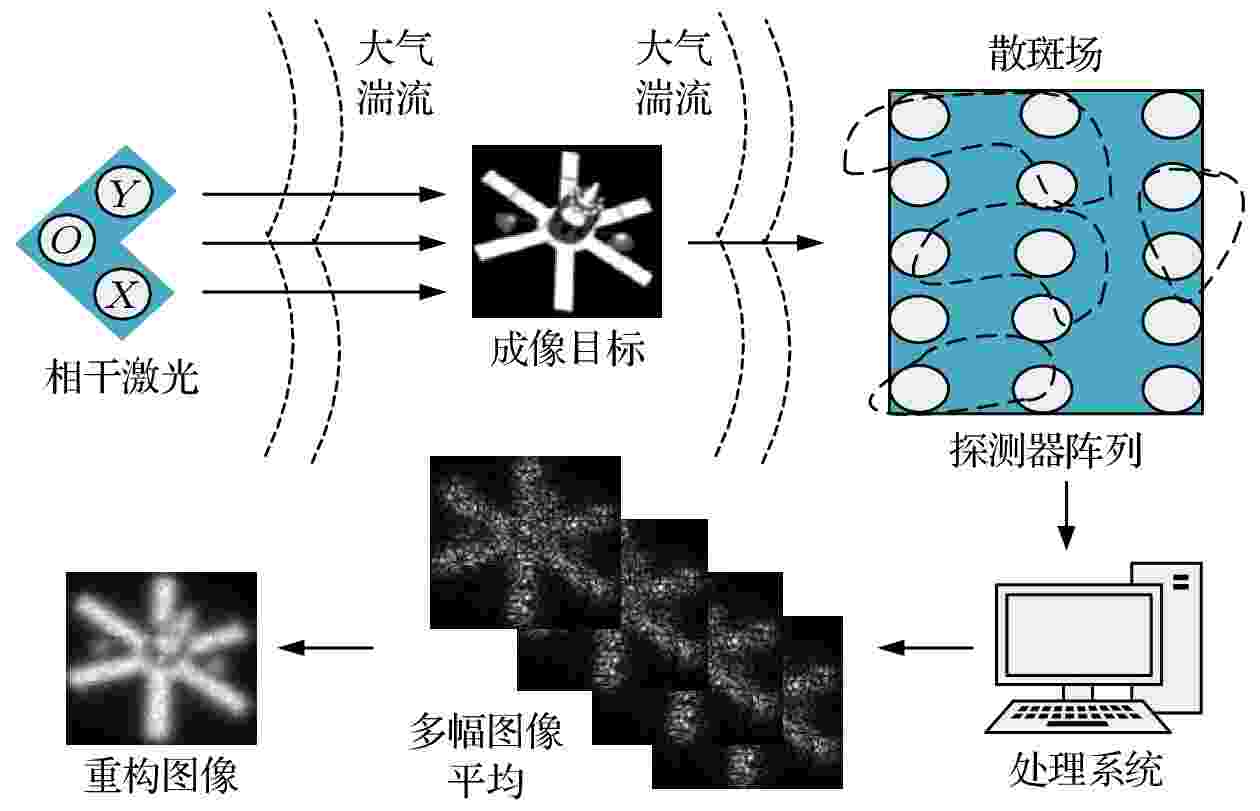
2024, 73 (2): 024202.
doi: 10.7498/aps.73.20231254
Abstract +
Sheared-beam imaging (SBI) is an unconventional ground-based optical imaging technique. It breaks through the traditional optical imaging concept by using three coherent laser beams, which are laterally displaced at the transmit plane, to illuminate the target, reconstructing the target image from echo signals. However, the echo data sampling of the imaging system is still not fast enough to reconstruct the high resolution and clear image of the target when imaging the target that is at rapidly changing position and attitude. In order to solve this problem, in this work an image reconstruction method is proposed based on five-beam fast sampling. An emitted beam array arranged in the cross shape with a central symmetrical structure is proposed, and the encoding and decoding method of the imaging system are changed. With a single exposure, the echo signals carry more spectrum information of the target, and the number of reconstructed images can be increased from 1 to 8, which quickly suppresses the speckle effect of the reconstructed image. Firstly, the principle of the imaging technique based on fast sampling is presented. Then, an image reconstruction algorithm based on fast sampling is studied. Eight groups of phase differences and amplitude information of the target can be extracted from echo signals. The wavefront phases are solved by the least-squares method, and wavefront amplitude can be obtained by the algebraic operation of speckle amplitude. The target image is reconstructed by the inverse Fourier transform. The simulation results show that comparing with the traditional three-beam image reconstruction method, the sampling times of echo data needed to obtain the same quality image are reduced from 20 to 5, which greatly reduces the sampling times of echo data and improves the sampling rate of echo data.
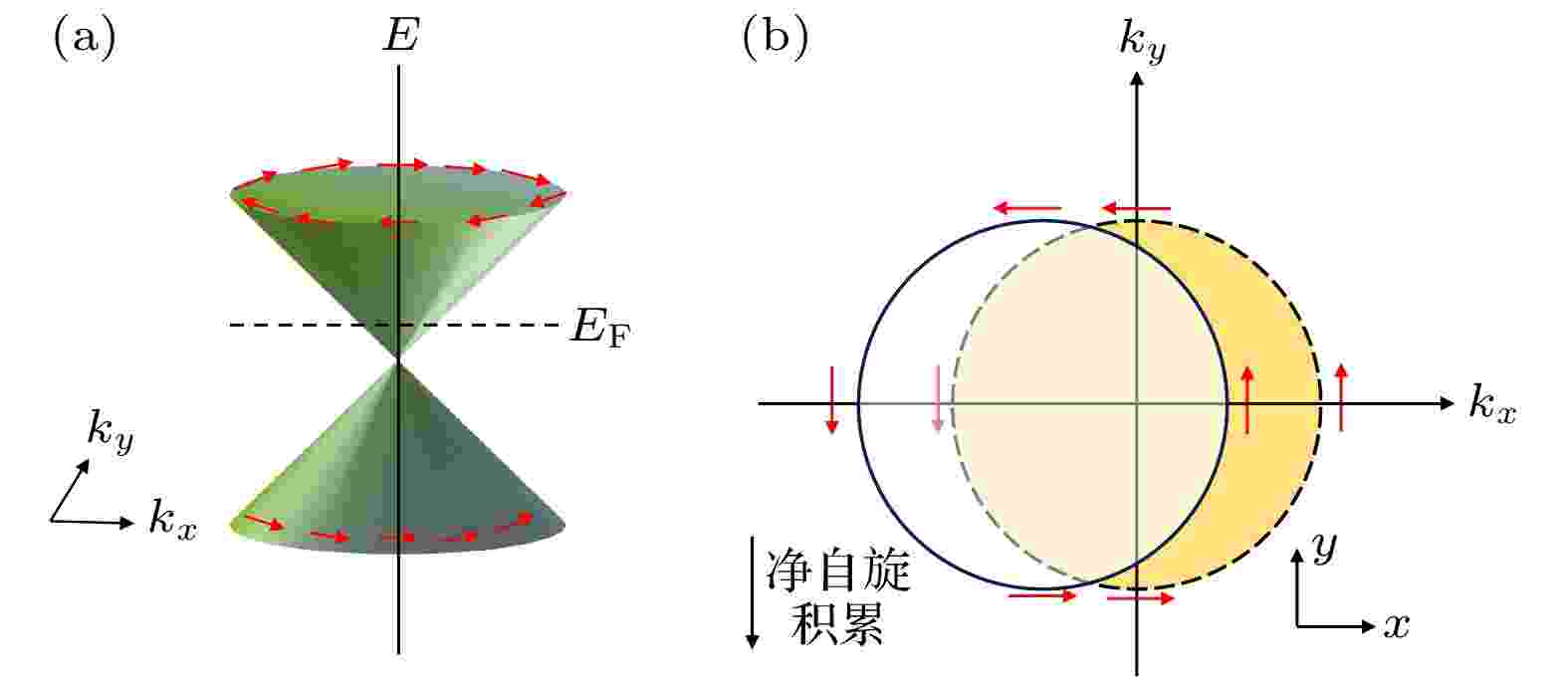
2024, 73 (1): 017505.
doi: 10.7498/aps.73.20231166
Abstract +
Novel quantum materials such as topological materials, two-dimensional materials, create new opportunities for the spintronic devices. These materials can improve the charge-spin conversion efficiency, provide high-quality interface, and enhance the energy efficiency for spintronic devices. In addition, they have rich interactions and coupling effects, which provides a perfect platform for finding new physics and novel methods to control the spintronic properties. Many inspiring results have been reported regarding the research on topological materials and two-dimensional materials, especially the layered topological and two-dimensional magnetic materials, and their heterostructures. This paper reviews the recent achievements of these novel quantum materials on spintronic applications. Firstly the breakthroughs that topological materials have been made in spin-orbit torque devices is introduced, then two-dimensional magnetic materials and their performances in spintronic devices are presented, finally the research progress of topological materials/two-dimensional magnetic materials heterostructures is discussed. This review can help to get a comprehensive understanding of the development of these novel quantum materials in the field of spintronics and inspire new ideas of research on these novel materials.
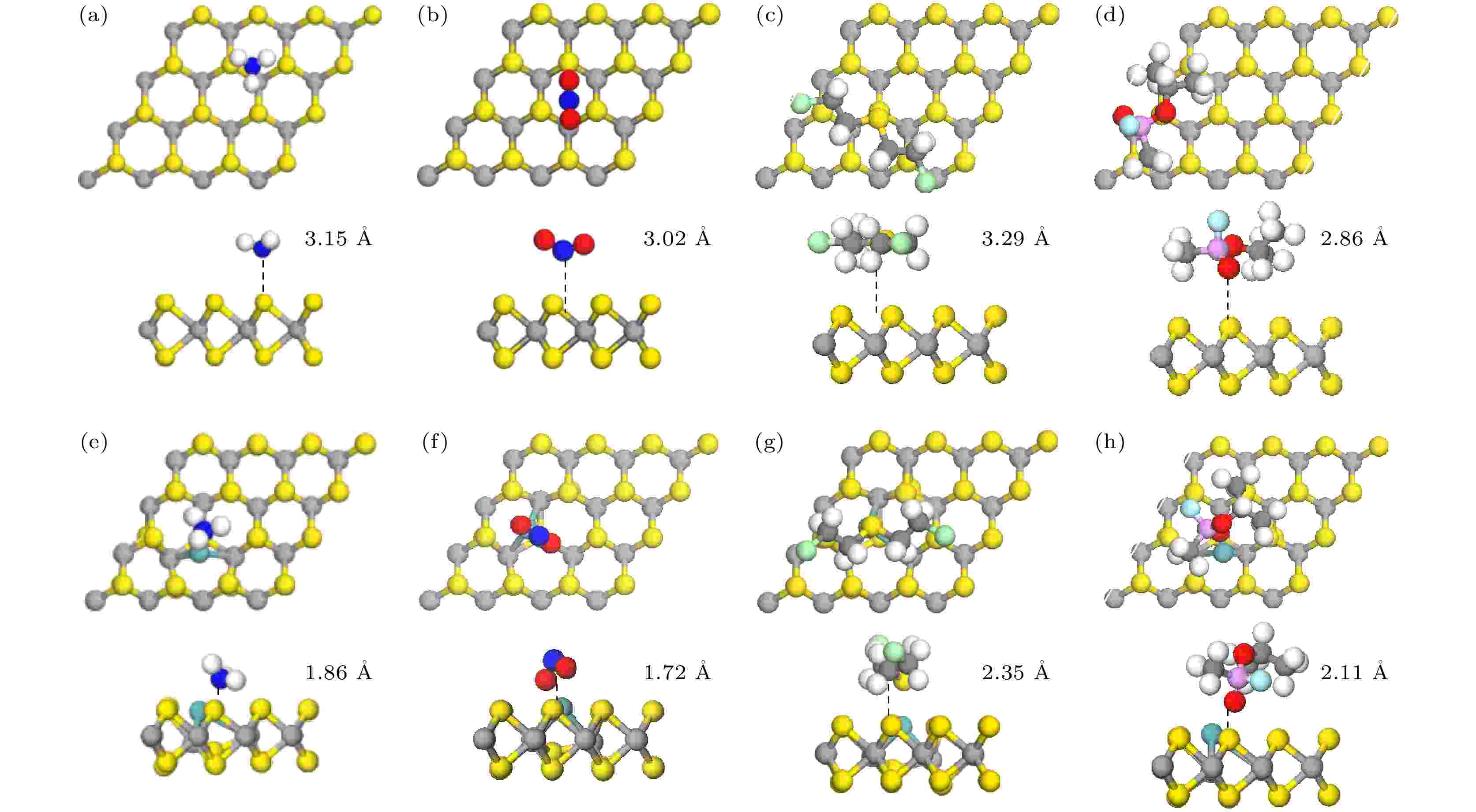
2024, 73 (1): 013101.
doi: 10.7498/aps.73.20231236
Abstract +
As is well known, the leakage of four toxic gases, NO2, NH3, mustard gas and sarin greatly threaten the environment and human health. Among of them, mustard gas and sarin are two serious chemical and biological weapons agents, and exposure to a small amount can cause skin burns and immediate death. NO2 and NH3 are two common toxic pollutants produced by automobile exhaust, coal combustion and petrochemical industry. The presence of trace amounts of NO2 and NH3 gas in human tissues can cause serious respiratory diseases and damage human brain and other systems. Thus, it is very important to realize the rapid detection of NO2, NH3, mustard gas and sarin in academia and industry. In this study, we use density functional theory to investigate the ability of a transition metal Mo doped two-dimensional VS2 structure to detect the four representative toxic gases. The results reveal that Mo atom doping has a significant effect on the stability and gas-sensitivity of the VS2 structure. The Mo atom can be successfully doped on the S-vacancy in the two-dimensional VS2 structure. Compared with the undoped structure VS2, the doped structure Mo-VS2 has strong interaction with NO2, NH3, sarin, and mustard gas, realizing effective adsorption of them. The presence of Mo atom in the VS2 lattice changes the electronic structure of VS2, also modifies its band gap and density of states. The interaction between the Mo-VS2 structure and the target analytes depends strongly on the nature of the gas molecule. The binding energy values for NO2, NH3, mustard gas, and sarin on the Mo-VS2 are significantly higher than those on the pristine VS2, indicating stronger interaction between the Mo-VS2 structure and these gases. Our calculations show that the Mo atom in VS2 changes its electrical resistance after being exposed to the gases, which can be used to distinguish different gases. Moreover, differences in charge redistribution within the Mo-VS2 structure upon being exposed to different gases can be used to explain their differential gas-sensitivity. Our results can provide sufficient theoretical basis for experimental researchers to design and optimize the performances of sensors in practical applications.
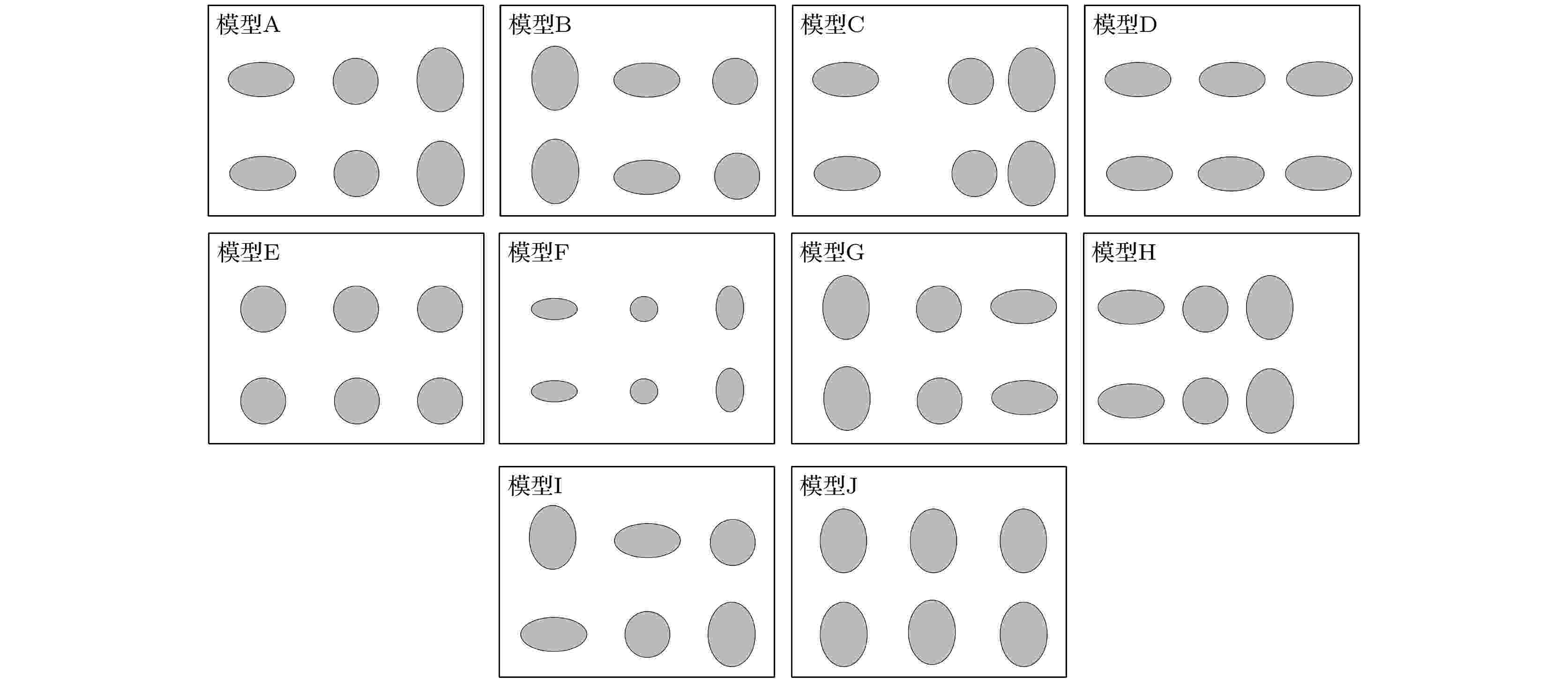
2024, 73 (3): 034302.
doi: 10.7498/aps.73.20231578
Abstract +
Ultrasonic identification has an important application value for national defense, military affairs, aerospace, nuclear facilities and other high-tech fields. Ultrasonic waves can be used to identify any metal material. At present, the researches focus on algorithms for identifying the difference in ultrasonic signal among materials, but the study on the corresponding identification theory is lacking. In this work, 10 primary models of the microstructure of 2A12 aluminum alloy are established as analogies to the complex microstructures of polycrystalline metallic materials. The grains of these models are different from each other in size, separation distance, shape, arrangement directions and orders. The time-domain ultrasonic echo signals of different microstructures are calculated by making use of the finite element method. The grass-like signals between two echoes are ultrasonic backscattering signals, which are sensitive to any change of microstructure. The backscattering signals between the primary echo and the secondary echo in the ultrasonic echo time domain signals are extracted as ultrasonic fingerprints. The feature difference Q is defined to quantify the difference in ultrasonic fingerprint of each sample. The results show that the slight variation in microstructure will lead to difference in ultrasonic signal, and the difference caused by the variation in grain size is more distinct. And then, an ultrasonic identification algorithm is proposed, and the identification experiments are conducted on four 2A12 aluminum alloy samples with the same shape. The identification results show that the target sample can be accurately identified by using ultrasonic fingerprints and the ultrasonic fingerprints of the target sample are distinctly different from those of the other samples. The microstructure morphologies of the samples are examined by using scanning electron microscopy (SEM). The SEM results show that there are significant differences in grain size, separation distance and densification between samples although they are the same material. The features of the microstructure in the proposed ultrasonic scattering model in this work are confirmed by the actual y micromorphologies observed in the SEM images. The identification experiments and SEM results demonstrate that the established ultrasonic scattering model is effective. This work can provide a reference for theoretically studying ultrasonic identification and present an idea for developing some new identification algorithms in future.
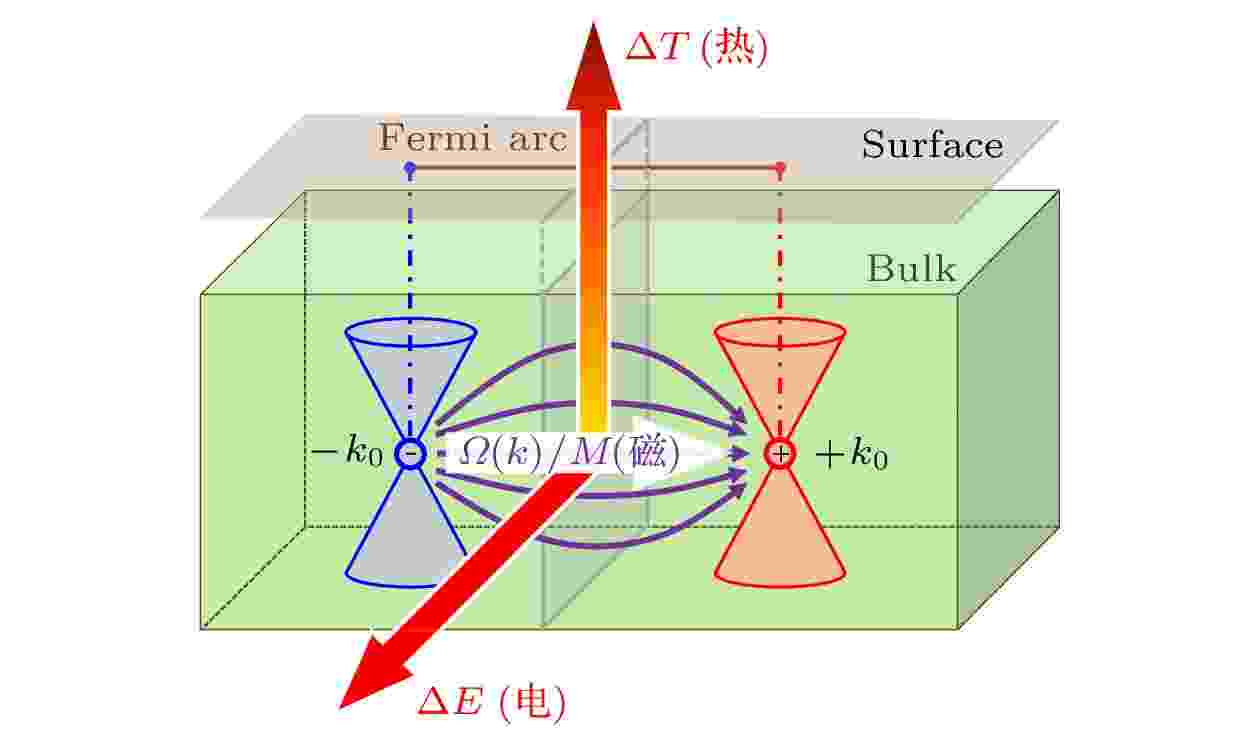
Coupling between magnetism and topology: From fundamental physics to topological magneto-electronics
2024, 73 (1): 017103.
doi: 10.7498/aps.73.20231711
Abstract +
Magnetism and topological physics are both well-developed disciplines, and their combination is a demand and foundation for the development of next-generation magneto-electronics. Magnetic topological materials are important products of coupling between magnetic order and topological physics, providing material carrier and regulatory degrees of freedom for novel topological physics. Magnetic Weyl semimetals realize Weyl fermion states under time-reversal symmetry breaking, leading to a host of novel magnetic, electric, thermal, and optical effects through enhanced Berry curvature originating from topology. The interaction between Weyl electrons and magnetic order also establishes topological electronic physics as a new principle and driving force for magneto-electronic applications. At present, the primary task and characteristic of the first development stage of magnetic topological materials is to discover new states and effects, while the understanding of interaction between topologically nontrivial electrons in momentum space and magnetic order in real space has received attention of researchers. The comprehensive advances of these two stages will accumulate the physical foundation and application explorations for topological magneto-electronics. This paper focuses on the two development stages of magnetic topological materials and discusses three aspects: (i) proposal and realization of strategy for magnetic topological materials; (ii) exploration of electronic states with nontrivial topology under uniform magnetic order and their associated novel physical properties; (iii) the interaction between localized magnetic states and topological electrons. It provides an in-depth discussion on current hot topics and development trends in the field, and future development in topological magneto-electronics, thereby assisting in the future development of topological spin quantum devices.

2024, 73 (1): 014201.
doi: 10.7498/aps.73.20231212
Abstract +
Optical nonreciprocity has been a popular research topic in recent years. Semiconductor quantum wells (SQWs) play a key role in many high-performance optoelectronic devices. In this paper, we propose a theoretical scheme to achieve nonmagnetic optical nonreciprocity based on the four-wave mixing effect in SQW nanostructures. Using the experimentally available parameters, the nonreciprocal behavior of the probe field in forward direction and backward direction is achieved through this SQW, where both nonreciprocal transmission and nonreciprocal phase shift have high transmission rates. Furthermore, by embedding this SQW nanostructure into a Mach-Zender interferometer, a reconfigurable nonreciprocal device based on high transmission nonreciprocal phase shift that can be used as an isolator or a circulator, is designed and analyzed. The device can be realized as a two-port optical isolator with an isolation ratio of 92.39 dB and an insertion loss of 0.25 dB, and as a four-port optical circulator with a fidelity of 0.9993, a photon survival probability of 0.9518 and a low insertion loss with suitable parameters. Semiconductor media have the advantages of easier integration and tunable parameters, and this scheme can provide theoretical guidance for implementing nonreciprocal and nonreciprocal photonic devices based on semiconductor solid-state media.

2024, 73 (2): 028801.
doi: 10.7498/aps.73.20231061
Abstract +
Perovskite solar cells have been a prominent focus in the field of photovoltaics in recent decades, owing to their exceptional performance: easy synthesis, and cost-effectiveness. The all-inorganic cesium-based perovskite CsPbBr3, known for its remarkable thermal stability, has become a star material in the field of optoelectronics due to its outstanding luminescent properties. Despite the high efficiency of lead-based perovskite solar cells, the toxicity associated with lead and the poor long-term stability of these devices remain significant barriers to their large-scale commercialization. As is well known, non-radiative electron-hole recombination significantly shortens the carrier lifetime, acting as a primary pathway for excited state charge to loss energy. This phenomenon directly affects the photovoltaic conversion efficiency and charge transfer performance of perovskite materials. Therefore, maximizing the reduction of non-radiative recombination energy loss in perovskite solar cells has become a crucial research focus. In this study, a systematic exploration is conducted by using a non-adiabatic molecular dynamics approach combined with time-dependent density functional theory to investigate the excited-state carrier dynamics of CsPbBr3 and its alloyed structures, CsPb0.75Ge0.25Br3 and CsPb0.5Ge0.25Sn0.25Br3. The study comprehensively analyzes the non-radiative electron-hole recombination scenarios and the mechanisms for reducing charge energy loss based on crystal structure, electronic properties, and excited-state properties. The research findings reveal that alloying with Sn/Ge can reduce the bandgap, increase non-adiabatic coupling, and shorten the decoherence time. The interplay of reduced quantum decoherence, smaller bandgap, and larger non-adiabatic coupling effectively decelerates the electron-hole recombination process. Consequently, the carrier lifetime of the CsPb0.75Ge0.25Br3 system extends by 1.6 times. Moreover, under the joint influence of Sn/Ge, the carrier lifetime of the CsPb0.5Ge0.25Sn0.25Br3 system extends by 4.2 times compared with those of the original system. The overall sequence follows CsPb0.5Ge0.25Sn0.25Br3 > CsPb0.75Ge0.25Br3 > CsPbBr3. This study underscores the significant influence of binary alloying of B-site metal cations (in the perovskite structure ABX3, where B-site refers to the metal cation) on the non-radiative electron-hole recombination of CsPbBr3.This research presents an effective alloying scheme that substantially prolongs the carrier lifetime of perovskites, offering a rational approach to optimizing solar cell performance. It lays the groundwork for the future design of perovskite solar cell materials.

2024, 73 (2): 027801.
doi: 10.7498/aps.73.20231339
Abstract +
Photoconductivity (PC) spectroscopy and photoluminescence (PL) spectroscopy were used to characterize two heterostructure configurations of InAlAs/InP grown by molecular beam epitaxy (MBE) on the InP (100) substrate. The sample A is the type called normal heterostructure, which has an In0.52Al0.48As layer grown on InP, while sample B is called the inverse type formed by an InP cap layer on In0.52Al0.48As. The front excitation was employed in both PC experiment and PL experiment and the measurements were conducted at 77 K. The PC spectrum of sample A shows an abnormal step-like drop when the photon energy is larger than the energy band gap of In0.52Al0.48As. The phenomenon implies that the conductance of sample is a multilayer effect including the contribution of interfacial two-dimensional electron gas (2DEG). Moreover, a conductance peak is observed at 916 nm below the bandgap of InP. Accordingly, an intense luminescent peak at the wavelength manifests in the PL spectrum. The origin of the 916 nm peak is attributed to the recombination of 2DEG electrons with the valence band holes excited near the interface. However, the spectral feature of the above energy does not exist in both PC and PL spectra of sample B. This difference may be explained by the different interface electronic structures of the inverse interface. For the latter case, considering that a graded variation in In-As-P composition is related to the inverse interface of InP/InAlAs, the band bending effect should be weak. In such a case, the bound energy of 2DEG in the interface potential well is raised closer to the conductance band of the bulk. Consequently, the recombination energy of 2DEG at the inverse interface with the holes in the valence band is close to the band-to-band transition of InP bulk and the luminescence is difficult to be distinguished from that of bulk InP. The work also demonstrates that the comparative study with both PC technique and PL technique is helpful to provide a full insight into the interface electronic property.

2024, 73 (2): 027702.
doi: 10.7498/aps.73.20230614
Abstract +
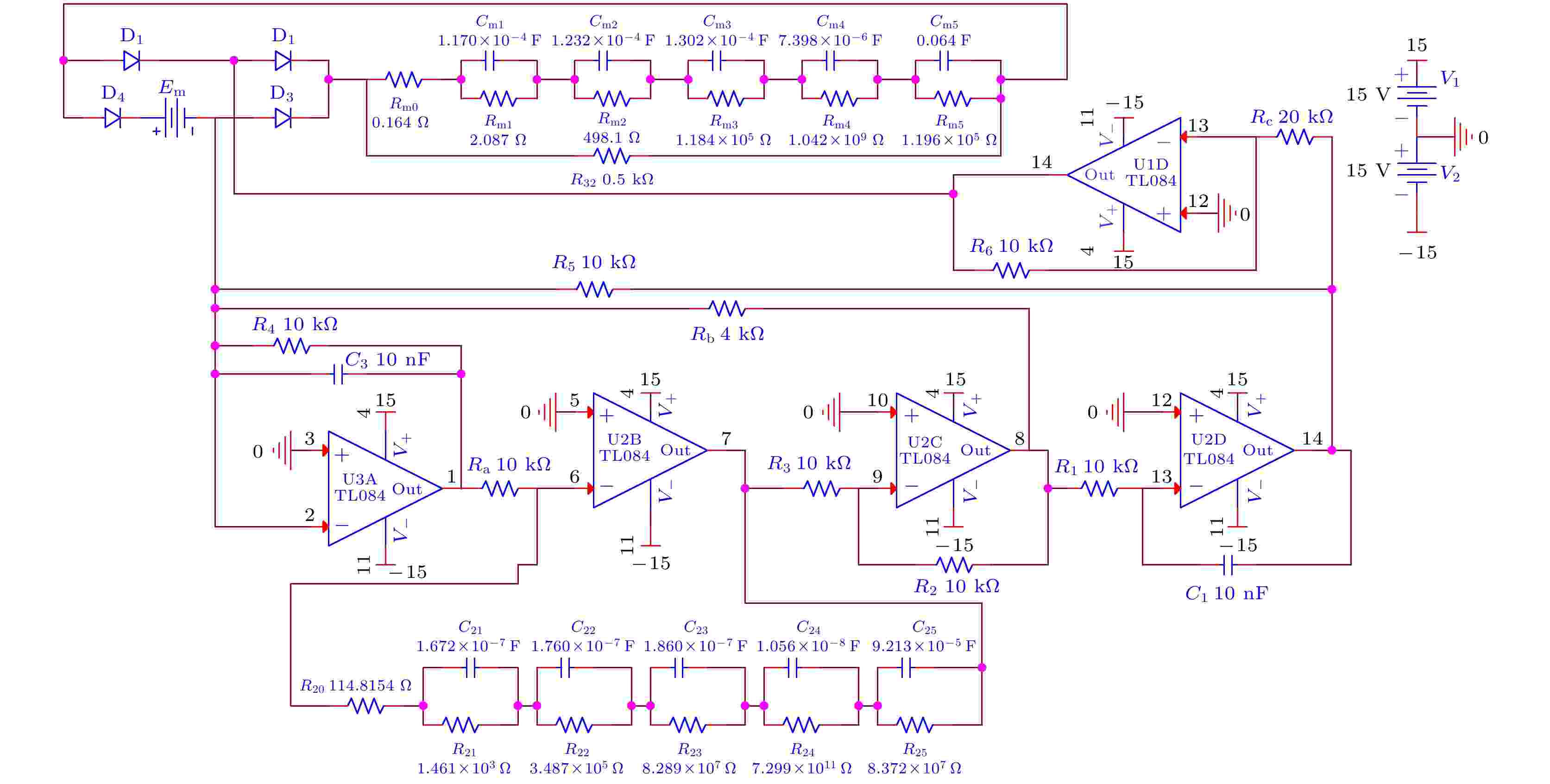
2024, 73 (1): 010501.
doi: 10.7498/aps.73.20231211
Abstract +
A physical memristor has an asymmetric tight hysteresis loop. In order to simulate the asymmetric tight hysteresis curve of the physical memristor more conveniently, a fractional-order diode bridge memristor model with a bias voltage source is proposed in this paper, which can continuously regulate the hysteresis loop. Firstly, based on fractional calculus theory, a fractional order model of a diode bridge memristor with a bias voltage source is established, and its electrical characteristics are analyzed. Secondly, by integrating it with the Jerk chaotic circuit, a non-homogeneous fractional order memristor chaotic circuit model with a bias voltage source is established, and the influence of bias voltage on its system dynamic behavior is studied. Once again, a fractional-order equivalent circuit model is built in PSpice and validated through circuit simulation. The experimental results are basically consistent with the numerical simulation results. Finally, the experiments on the circuit are completed in LabVIEW to validate the correctness and feasibility of the theoretical analysis. The results indicate that the fractional order memristor with bias voltage source can continuously obtain asymmetric tight hysteresis loop by adjusting the voltage of the bias voltage source. As the bias power supply voltage changes, the non-homogeneous fractional order memristor chaotic system exhibits that the period doubling bifurcation turns into chaos due to the symmetry breaking.
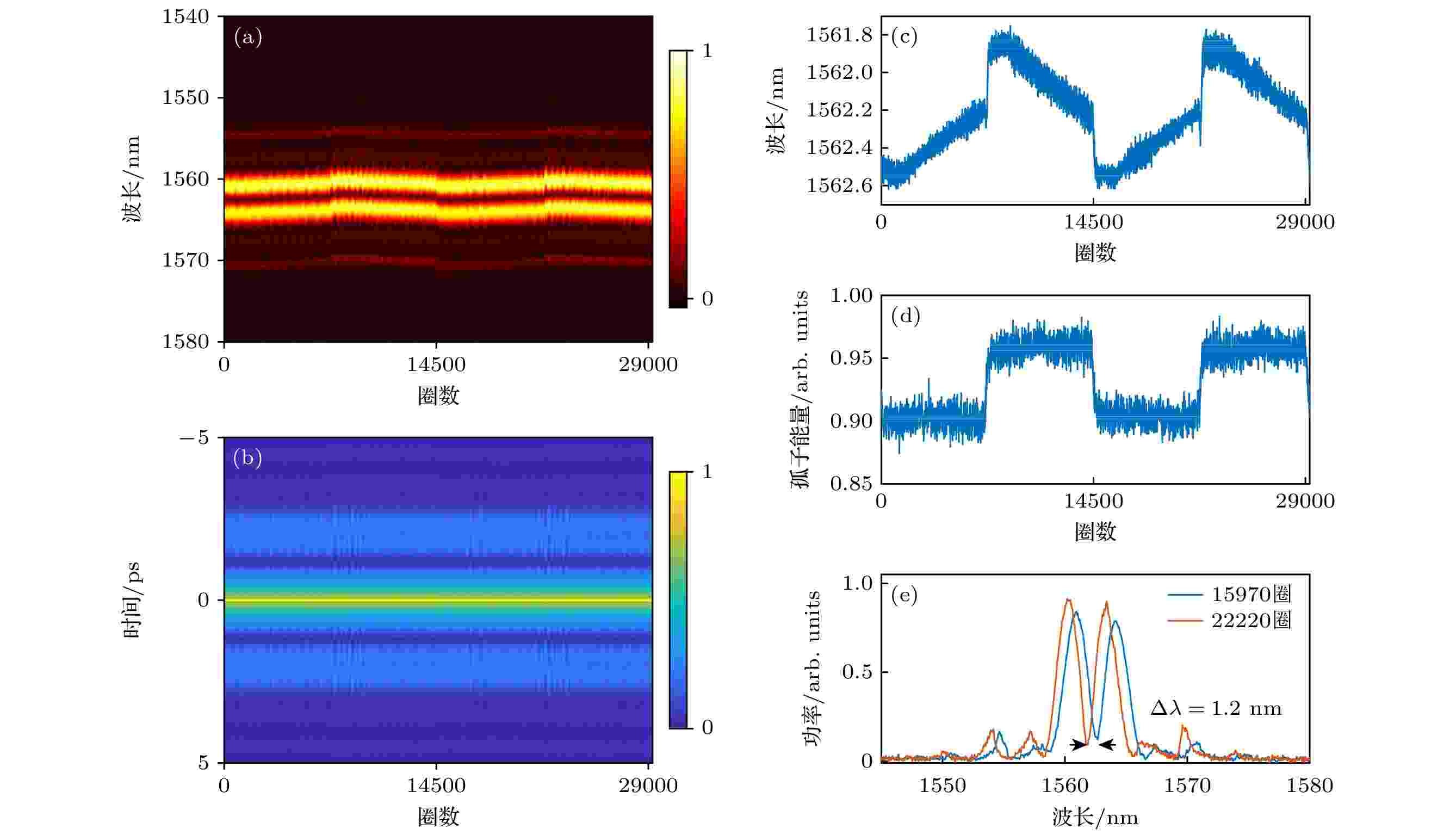
2024, 73 (1): 014202.
doi: 10.7498/aps.73.20231030
Abstract +
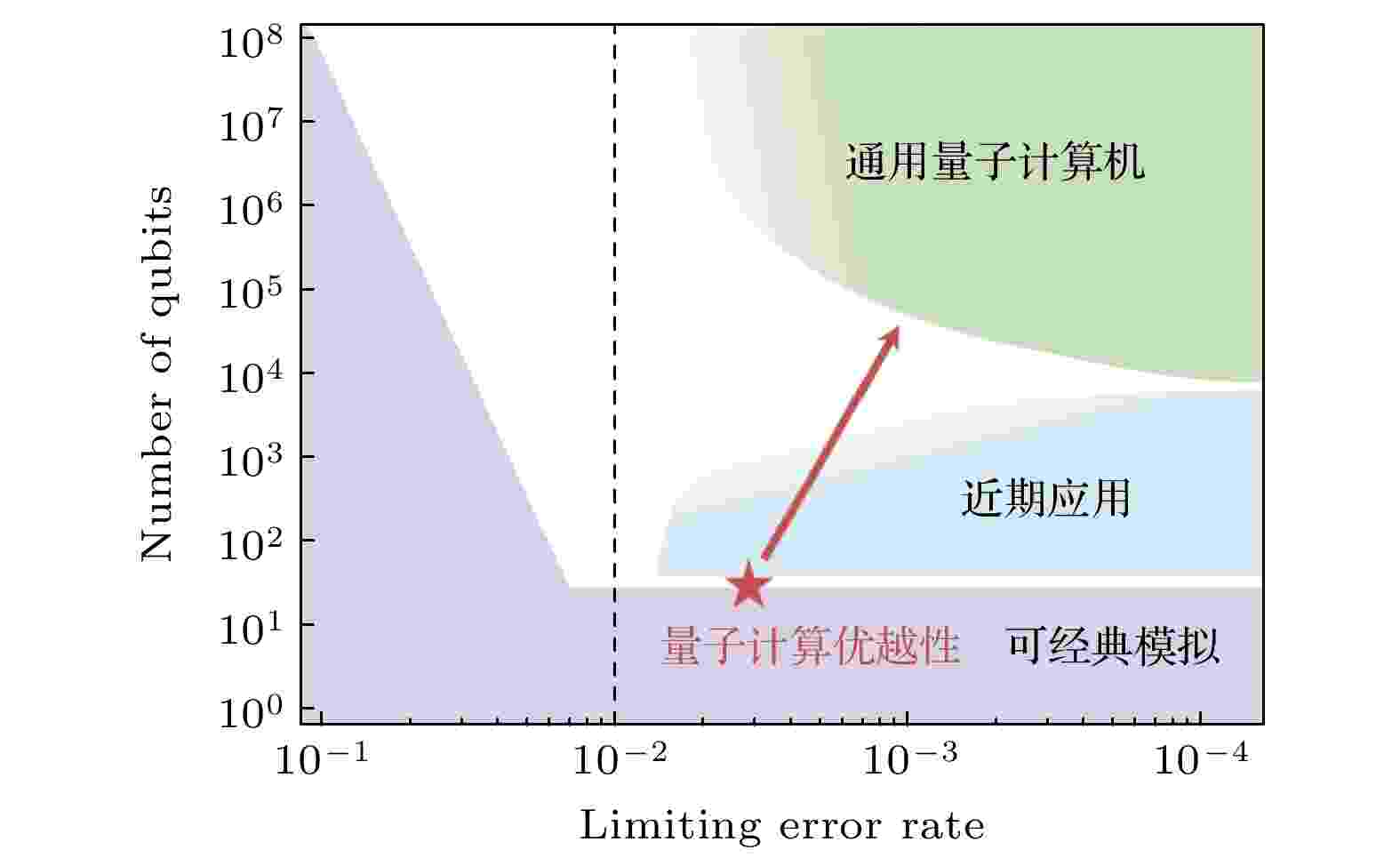
2024, 73 (1): 010301.
doi: 10.7498/aps.73.20231795
Abstract +
In the early decades of the 20th century, the inception of quantum mechanics catalyzed the first quantum revolution, resulting in groundbreaking technological advances, such as nuclear energy, semiconductors, lasers, nuclear magnetic resonance, superconductivity, and global satellite positioning systems. These innovations have promoted significant progress in material civilization, fundamentally changed the way of life and societal landscape of humanity. Since the 1990s, quantum control technology has made significant strides forward, ushering in a rapid evolution of quantum technologies, notably exemplified by quantum information science. This encompasses domains such as quantum communication, quantum computing, and quantum precision measurement, offering paradigm-shifting solutions for enhancing information transmission security, accelerating computational speed, and elevating measurement precision. These advances hold the potential to provide crucial underpinning for national security and the high-quality development of the national economy. The swift progression of quantum information technology heralds the advent of the second quantum revolution. Following nearly three decades of concerted efforts, China’s quantum information technology field as a whole has achieved a leap. Specifically, China presently assumes a prominent international role in both the research and practical application of quantum communication, leading the global domain in quantum computing, and achieving international preeminence or advanced standing across various facets of quantum precision measurement. Presently, it is imperative to conduct a comprehensive assessment of the developmental priorities in the realm of quantum information in China for the forthcoming 5 to 10 years, in alignment with national strategic priorities and the evolving landscape of international competition. This will enable the proactive establishment of next-generation information technology systems that are secure, efficient, autonomous, and controllable.

- 1
- 2
- 3










